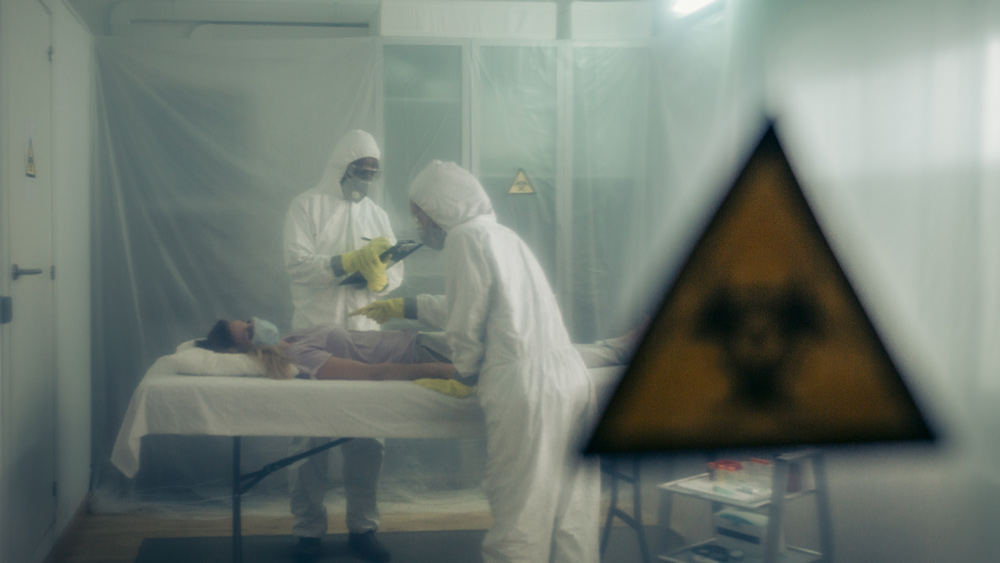 Parler
Parler Gab
Gab
From bio-terror to bureaucratic overhaul
The 2001 anthrax attacks were a watershed moment for U.S. biodefense. The attacks, which killed five people and infected 17 others, exposed glaring gaps in the nation’s preparedness. Yet, the investigation itself became a cautionary tale of government dysfunction. Dr. Steven Hatfill, a scientist wrongly accused of orchestrating the attacks, endured relentless FBI harassment. “The FBI was tailing him, running him off the road, harassing him day and night,” recounted Dr. Robert Malone, a prominent voice in biodefense criticism. The eventual suspect, Bruce Ivins, an Army anthrax specialist, died by suicide before facing trial. Some theorize that Ivins, like a fireman who doubles as an arsonist, orchestrated the attacks to magnify society’s need for his expertise. This scenario underscores a troubling pattern: institutions exploiting threats to justify their own existence. In the aftermath, Dr. Anthony Fauci successfully lobbied Congress to expand NIAID’s role in biodefense, arguing that the Department of Defense had failed in its responsibilities. “Fauci argued that DOD had allowed these bioweapons to leak and couldn’t handle the job,” Malone explained. This shift consolidated NIAID’s power, significantly increasing its budget and influence. By 2018, NIAID’s budget had ballooned to over $36 billion, with a disproportionate share allocated to bioterrorism research.Structural issues: bureaucracy and the slow-walking of progress
The U.S. biodefense system is a textbook example of bureaucratic inefficiency. Senior Executive Service (SES) employees, who serve as gatekeepers within agencies like ASPR, often obstruct initiatives they oppose. “Presidents come and go; they stay,” Malone observed. These entrenched bureaucrats, shielded by civil service protections, prioritize job security over swift action, a phenomenon known as “slow-walking.” Compounding the problem are the cumbersome requirements of Federal Acquisition Regulations (FAR). Government contracts impose strict compliance rules, including detailed timecards for all employees, which Malone described as “an endless La Brea tar pit.” To bypass these obstacles, agencies have turned to Other Transaction Authorities (OTAs). Yet, during Covid-19, OTAs were misapplied to mass-produce vaccines, raising questions about oversight and legality.The biodefense paradox: stockpiling vs. innovation
BARDA’s mission involves acquiring and stockpiling countermeasures like vaccines for anthrax and smallpox. However, this work exists in a paradox: if successful, these preventive measures remain unseen and underappreciated. Malone likened it to his father’s joke about being “the tiger catcher for the Bronx.” When kids said, “There are no tigers in the Bronx,” he’d reply, “See what a good job I’m doing?” The business model for biodefense is inherently flawed. Unlike businesses that adapt to market demand, BARDA develops products for crises that may never occur. This leads to what Malone called “psychological bioterrorism,” where fear is stoked to sustain funding. He cited the example of bird flu: “The CDC itself says bird flu is not a major threat to human health right now. Yet, we’re funneling hundreds of millions into it.” The U.S. biodefense system is a house of cards, precariously balanced on a foundation of bureaucratic inefficiency and overlapping mandates. While the threats are real—from bioterrorism to emerging pandemics—the current infrastructure is ill-equipped to respond swiftly or effectively. The Covid-19 scandal exposed the risks of rushed, experimental technologies and the dangers of prioritizing stockpiling over innovation for treatments, phytochemicals, antivirals, and simple immune system solutions. To safeguard against future threats, the U.S. must streamline its biodefense efforts, eliminate bureaucratic rivalries, and invest in nimble, forward-looking strategies. As Malone aptly put it, “If we stop disease before it develops, we don’t need all the therapeutics and prophylactics.” The nation deserves more than a bloated, disjointed system that leaves it perpetually playing catch-up. The time for reform is now—before the next crisis strikes and the house of cards comes crashing down. Sources include: Brownstone.org ASPR.HHS.gov BARDA.govJonathan Otto’s ‘Cancer Decoded’ unveils light therapy as a potent cancer treatment
By Finn Heartley // Share
WHO pushes defective vaccines on Gazans, ignoring critical needs in the region
By Lance D Johnson // Share
FDA misled the judiciary about Pfizer’s vaccine documents
By News Editors // Share
From preparedness to presents: Smart ways to shop clean this Black Friday
By zoeysky // Share
Unlocking turmeric's healing powers: The best way to improve bioavailability
By newseditors // Share
FDA issues urgent recall for mislabeled potassium chloride injections
By ljdevon // Share
AI-powered privacy: New offline AI model challenges big tech surveillance
By finnheartley // Share
Mamdani’s policy proposals stir debate on New York city’s economic future
By finnheartley // Share











